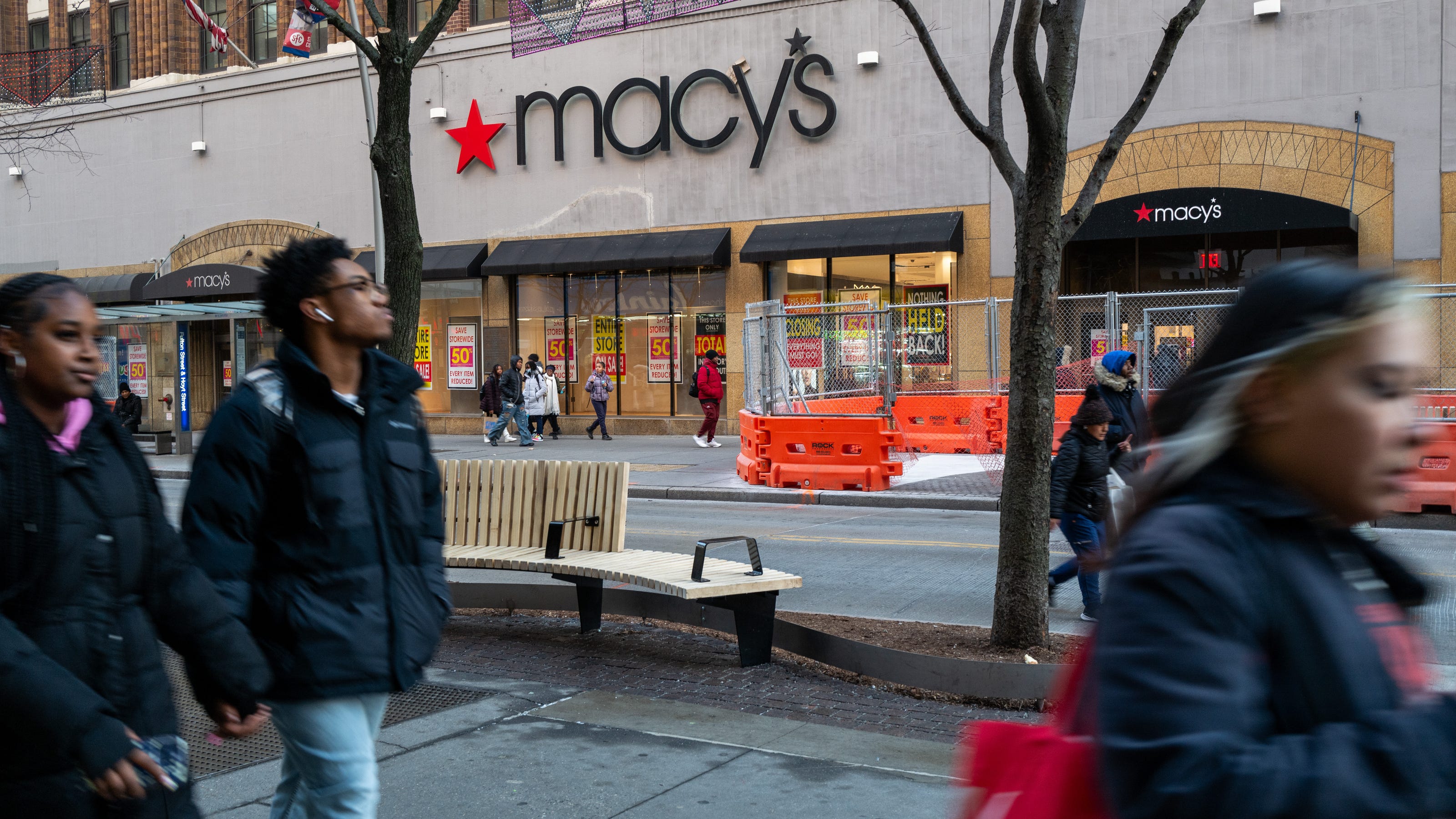Macy's Store Closures: Which Locations Are Shutting Down?
Editor’s Note: Macy's has announced further store closures. This article details the impacted locations and analyzes the reasons behind these decisions.
Why This Matters: The Shifting Landscape of Retail
Macy's, a retail giant, is facing the same pressures as many brick-and-mortar stores: e-commerce competition, changing consumer habits, and economic uncertainty. Understanding which Macy's locations are closing offers insights into the evolving retail landscape and the challenges facing even established brands. This article will explore the key factors contributing to these closures and what they mean for shoppers, employees, and the broader economy. We'll examine the specific locations impacted, the company's strategic reasoning, and the potential consequences.
Key Takeaways
| Point | Detail |
|---|---|
| Number of Closures | [Insert Number of Stores Closing] |
| States Affected | [List States with Closures - e.g., California, New York, Texas] |
| Reasons for Closure | Declining sales, high operating costs, strategic realignment, lease expirations |
| Employee Impact | [Insert information regarding employee support and relocation options] |
| Future of Macy's | [Overview of Macy's restructuring strategy and outlook] |
Macy's Store Closures: A Detailed Look
Macy's recent announcement of store closures underscores the ongoing transformation within the retail sector. The decision to shut down these specific locations reflects a complex interplay of factors, primarily driven by a need to adapt to the changing consumer landscape and optimize the company's overall performance. While Macy's continues to invest in its online presence, the closures highlight the challenges of maintaining a profitable physical footprint in a market increasingly dominated by e-commerce.
Key Aspects of Macy's Store Closure Strategy
- Financial Performance: Underperforming stores, those with consistently low sales and high operating costs, are prime candidates for closure.
- Lease Agreements: Expiring leases often trigger re-evaluation, with Macy's weighing the costs of renewal against the potential return on investment.
- Market Saturation: In areas with multiple Macy's locations or strong competition from other retailers, consolidation may be strategically beneficial.
- Strategic Realignment: Macy's may be prioritizing investments in more profitable locations and focusing on its omnichannel strategy.
Detailed Analysis of Impacted Locations
[Insert a list of closing Macy's locations, organized by state. For each location, provide additional details such as the mall it's located in, opening date (if available), and any specific reasons mentioned for its closure by Macy's. Include links to relevant news sources or press releases if available.]
Interactive Element: The Impact on Local Economies
Introduction: The Ripple Effect of Store Closures
Macy's store closures have a significant impact on local economies, extending beyond the immediate loss of jobs. This section examines the wider consequences, focusing on the roles played by various stakeholders and exploring the risks and mitigations involved.
Facets of Economic Impact
- Job Losses: Direct job losses for Macy's employees, impacting individuals and families.
- Reduced Tax Revenue: Less sales tax revenue for local governments, affecting public services.
- Decreased Foot Traffic: Negative impact on nearby businesses in malls and surrounding areas.
- Mitigations: Government initiatives to support job retraining, attracting new businesses to the area, redevelopment of vacant spaces.
- Impacts: Long-term economic consequences for communities, potentially affecting property values and the overall economic health.
Summary: Rebuilding After Closure
The economic effects of Macy's closures necessitate proactive strategies for community recovery. Government support, community initiatives, and private sector investment are crucial in mitigating the negative impacts and fostering future economic growth.
People Also Ask (NLP-Friendly Answers)
Q1: What is the reason behind Macy's store closures?
A: Macy's store closures are primarily due to a combination of factors, including declining sales in certain locations, high operating costs, expiring leases, and a strategic shift toward online sales and more profitable stores.
Q2: Which Macy's stores are closing?
A: [Provide a concise list of states and a general number of stores closing. Avoid a full list here; direct them to the main article for details.]
Q3: How will Macy's store closures affect employees?
A: Macy's has stated [insert details about employee support, such as severance packages, relocation assistance, and job placement services].
Q4: What is the future of Macy's?
A: Macy's is focusing on its omnichannel strategy, investing in e-commerce, and streamlining its physical store footprint to improve profitability.
Q5: How can I find out if my local Macy's is closing?
A: Check Macy's official website for a complete list of closing locations or contact your local store directly.
Practical Tips for Navigating Macy's Store Closures
Introduction: While the news of Macy's closures may be disappointing, there are steps you can take to adapt to these changes.
Tips:
- Check the closure list: Confirm if your local store is affected.
- Take advantage of sales: Closing stores often offer significant discounts.
- Shop online: Utilize Macy's online platform for continued access to their products.
- Support local businesses: Explore alternative shopping options in your community.
- Consider Macy's credit card benefits: Understand any changes or implications for your card.
Summary: Proactive planning can help you navigate the changes resulting from Macy's store closures.
Transition: Let's summarize the key insights from this article.
Summary
Macy's store closures represent a significant development in the retail industry, highlighting the challenges facing brick-and-mortar stores in the age of e-commerce. Understanding the reasons behind these closures and their broader implications is crucial for both consumers and the economy.
Closing Message
The ongoing transformation of the retail landscape necessitates adaptation and innovation. What strategies do you believe retailers should adopt to thrive in this dynamic environment?
Call to Action (CTA)
Stay informed about the latest retail news by subscribing to our newsletter! Share this article with your network to spread awareness about Macy's store closures and their impact. [Link to newsletter signup]

